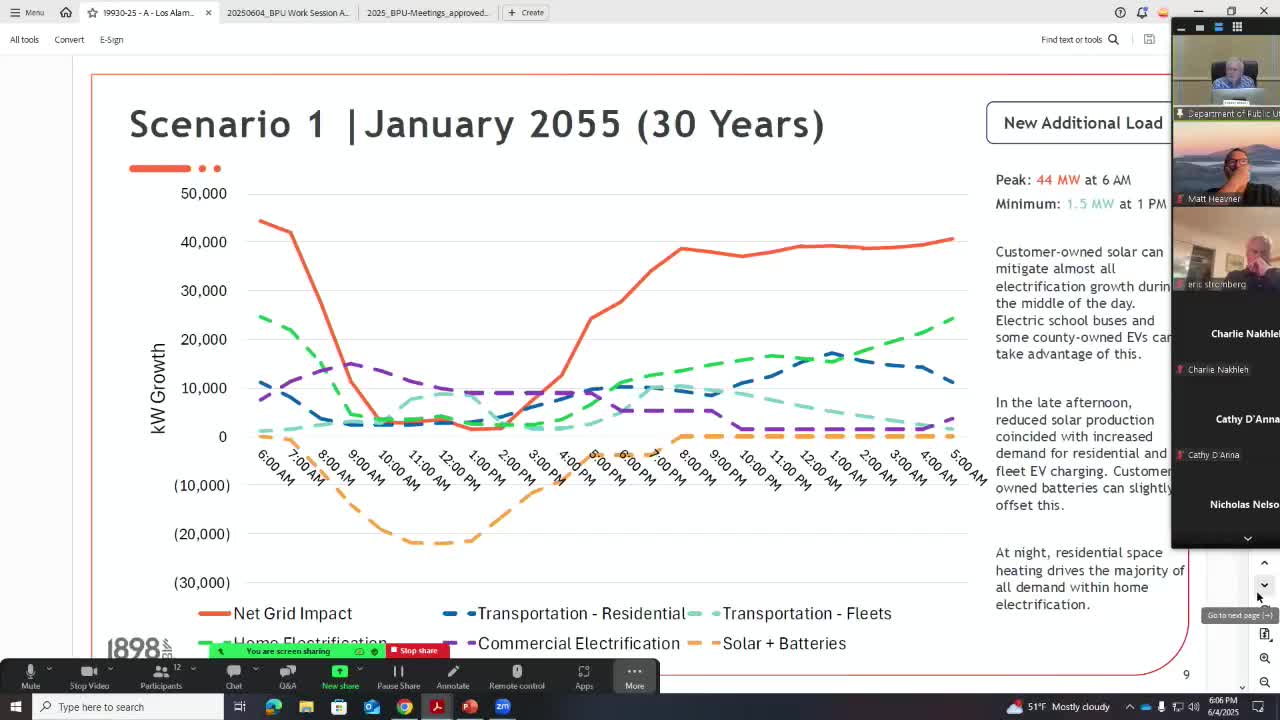Los Alamos plans electrification study to assess grid impacts and capacity challenges
June 04, 2025 | Los Alamos, New Mexico
This article was created by AI summarizing key points discussed. AI makes mistakes, so for full details and context, please refer to the video of the full meeting. Please report any errors so we can fix them. Report an error »

In a recent work session held by the Los Alamos County Board of Public Utilities, discussions centered on the future of electric vehicle (EV) infrastructure and the implications for the county's electric distribution system. As the county prepares for an increase in EV adoption, officials are keenly aware of the challenges and opportunities that lie ahead.
The meeting highlighted a significant concern for potential EV buyers: the need for home charging stations. Many residents may hesitate to invest in electric vehicles due to the additional costs associated with installing high-power charging stations and hiring electricians to ensure proper electrical setups. However, it was noted that for those with shorter commutes, a standard 120-volt outlet could suffice, making EVs a more accessible option for many residents.
As the conversation progressed, the focus shifted to the electric grid's capacity to handle increased demand from EV charging. Presentations revealed that while the peak load occurs in the early morning, there is a substantial load during evening hours as well. This pattern underscores the importance of managing charging behaviors to alleviate stress on the grid.
The board also discussed the recent energization of the last substation in Los Alamos, which is expected to enhance the reliability of the electric distribution system. Initial assessments indicate that the distribution feeders are currently underutilized, suggesting that the system is well-positioned to accommodate future growth. However, concerns were raised about the potential strain on service transformers and secondary conductors as more residents adopt electric vehicles.
Looking ahead, the board acknowledged the need for a comprehensive electrification impact analysis. This analysis will explore how increased electrification could affect the existing infrastructure and what upgrades may be necessary to maintain service reliability. The discussions also touched on the integration of renewable energy sources, particularly solar power, into the grid. The board is considering how to expand the current limits on solar generation capacity while ensuring that the system can handle reverse power flow without significant investments.
As Los Alamos County navigates the transition to a more electrified future, the insights gained from this meeting will play a crucial role in shaping the county's energy strategy. With careful planning and investment, officials are optimistic about the potential for electric vehicles and renewable energy to coexist harmoniously within the community's electric infrastructure.
The meeting highlighted a significant concern for potential EV buyers: the need for home charging stations. Many residents may hesitate to invest in electric vehicles due to the additional costs associated with installing high-power charging stations and hiring electricians to ensure proper electrical setups. However, it was noted that for those with shorter commutes, a standard 120-volt outlet could suffice, making EVs a more accessible option for many residents.
As the conversation progressed, the focus shifted to the electric grid's capacity to handle increased demand from EV charging. Presentations revealed that while the peak load occurs in the early morning, there is a substantial load during evening hours as well. This pattern underscores the importance of managing charging behaviors to alleviate stress on the grid.
The board also discussed the recent energization of the last substation in Los Alamos, which is expected to enhance the reliability of the electric distribution system. Initial assessments indicate that the distribution feeders are currently underutilized, suggesting that the system is well-positioned to accommodate future growth. However, concerns were raised about the potential strain on service transformers and secondary conductors as more residents adopt electric vehicles.
Looking ahead, the board acknowledged the need for a comprehensive electrification impact analysis. This analysis will explore how increased electrification could affect the existing infrastructure and what upgrades may be necessary to maintain service reliability. The discussions also touched on the integration of renewable energy sources, particularly solar power, into the grid. The board is considering how to expand the current limits on solar generation capacity while ensuring that the system can handle reverse power flow without significant investments.
As Los Alamos County navigates the transition to a more electrified future, the insights gained from this meeting will play a crucial role in shaping the county's energy strategy. With careful planning and investment, officials are optimistic about the potential for electric vehicles and renewable energy to coexist harmoniously within the community's electric infrastructure.
View full meeting
This article is based on a recent meeting—watch the full video and explore the complete transcript for deeper insights into the discussion.
View full meeting
